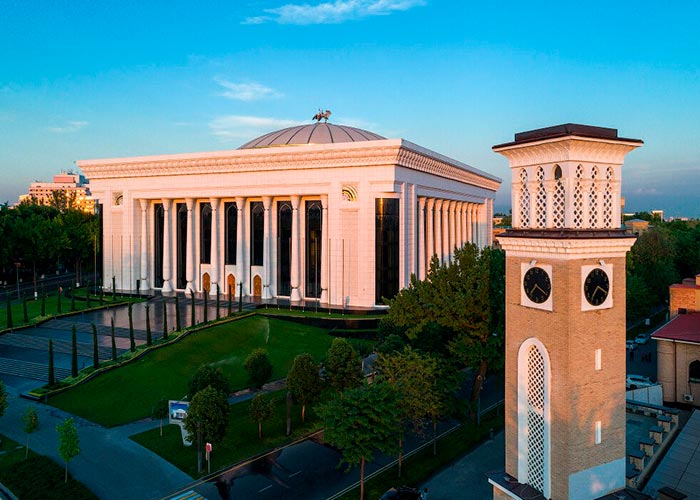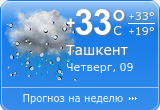


Barak-Khan Madrassah
The old part of Tashkent is an amazing historical place with madrassahs and mosques, narrow streets, and old mud houses. The medieval monuments such as Kukeldash and the building complex Hast Imam with Barak Khan are in the territory of the old town.
Barak-Khan Madrassah, near Chorsu Bazaar at Hast Imam Square, exudes a sense of a bygone era.
Barak-Khan Madrassah, near Chorsu Bazaar at Hast Imam Square, exudes a sense of a bygone era.
Barak Khan was erected in Tashkent in the mid-16th century. The idea of building it came to Ulugbek's grandson, Navruz Ahmadhanu (the current governor of the capital).
Due to the cultural changes in Maurya, the construction of the madrassah in Tashkent was changed. When Tashkent became a cultural center, many musicians, poets, painters, and artists flocked to the city. Then a court architect was ordered to build Barak Khan Madrassah.
The name of the madrassah, as well as the street on which the building was to be built, were chosen on purpose. Here was the center, where all the philosophers, scientists, and religious people gathered. And after the successful completion of construction, the madrassah was named "Lucky Ruler."
Barak Khan consists of a complex of buildings that were built at different times. First, there were two mausoleums. An unnamed mausoleum is considered to be the oldest mausoleum (15th century). It is easy to find it by its location (east corner of the main madrassah). There is the mausoleum of Suyunij-Khan too (second half of the 16th century).
The entire complex is decorated with hand-painted gold and mosaics. The walls, sails, domes, and arches are decorated with paintings in the technique "kundal." "Kundal" is a national painting technique that was created in several stages, beginning with the preparation of special inks. Kundal is a mixture of glue and cement. It is applied on top of the ornament and then coated with gold on the reliefs.
Special low khujdras were built over the entire length of the yard madrassah. The windows, which were decorated with pandjara of complex ornamental patterns, the ensemble is made with ragged brick.
Our travel agency, "Orient Mice," will be happy to provide you with transport, a hotel, and professional guides who will show you not only the city, but also tell you amazing stories about the architectural monuments of Tashkent.
Due to the cultural changes in Maurya, the construction of the madrassah in Tashkent was changed. When Tashkent became a cultural center, many musicians, poets, painters, and artists flocked to the city. Then a court architect was ordered to build Barak Khan Madrassah.
The name of the madrassah, as well as the street on which the building was to be built, were chosen on purpose. Here was the center, where all the philosophers, scientists, and religious people gathered. And after the successful completion of construction, the madrassah was named "Lucky Ruler."
Barak Khan consists of a complex of buildings that were built at different times. First, there were two mausoleums. An unnamed mausoleum is considered to be the oldest mausoleum (15th century). It is easy to find it by its location (east corner of the main madrassah). There is the mausoleum of Suyunij-Khan too (second half of the 16th century).
The entire complex is decorated with hand-painted gold and mosaics. The walls, sails, domes, and arches are decorated with paintings in the technique "kundal." "Kundal" is a national painting technique that was created in several stages, beginning with the preparation of special inks. Kundal is a mixture of glue and cement. It is applied on top of the ornament and then coated with gold on the reliefs.
Special low khujdras were built over the entire length of the yard madrassah. The windows, which were decorated with pandjara of complex ornamental patterns, the ensemble is made with ragged brick.
Our travel agency, "Orient Mice," will be happy to provide you with transport, a hotel, and professional guides who will show you not only the city, but also tell you amazing stories about the architectural monuments of Tashkent.


